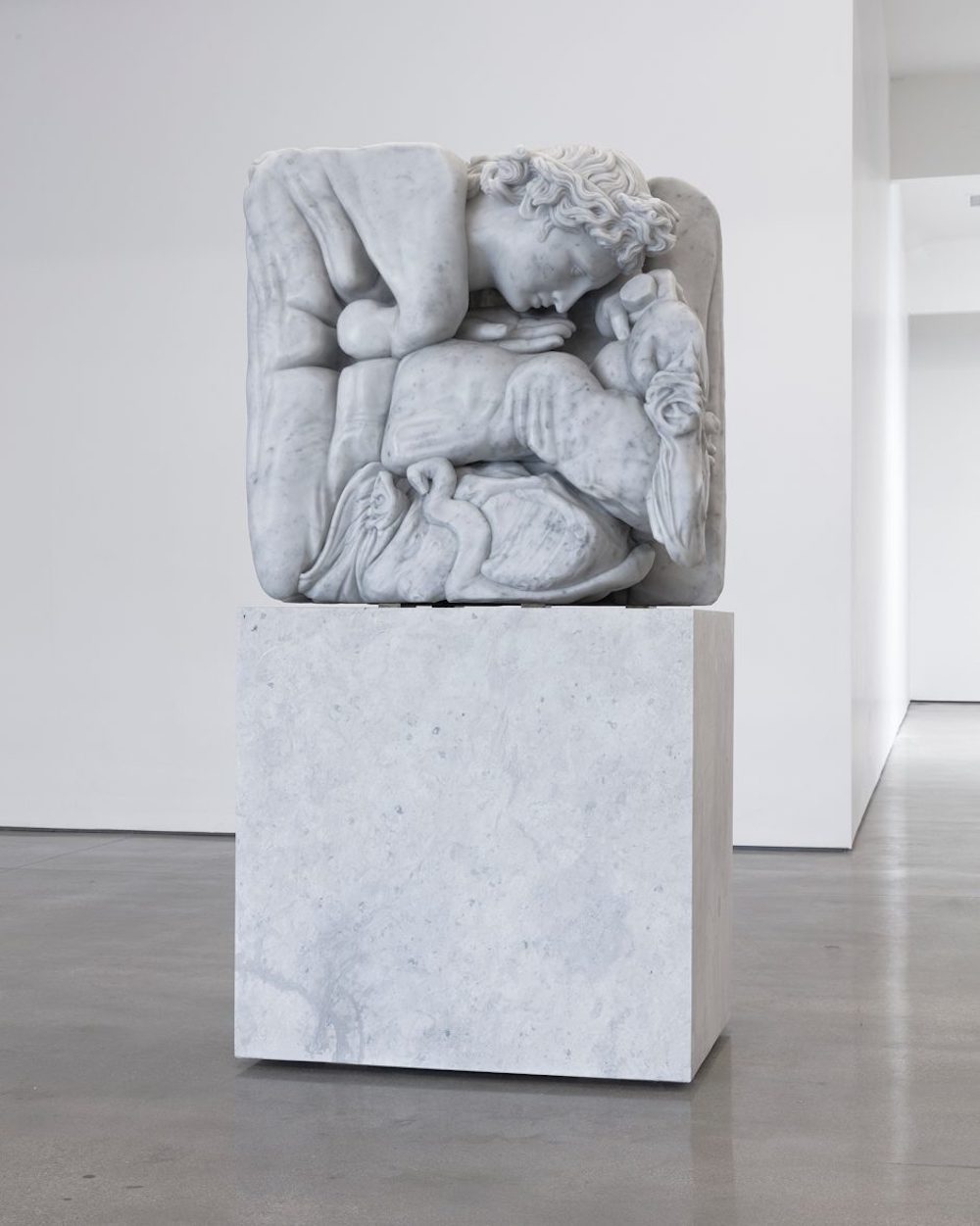In his current exhibition, the artist’s fifth at this gallery, Adam Parker Smith employs classical sculptural forms in a fresh new way, featuring six large sculptures, approximately 35-feet or one cubit diameter.
Working in white Carrara marble on a stone pedestal, Smith’s figures (all works 2022) are resting, seated or standing, but regardless of position, startlingly compressed. The result is beautiful, strange and compelling work that resonates with our fraught present times. Beset by climate change, wars, inflation and other global problems, as well as America’s innate political and cultural stressors, a viewer might well feel as if the weight of the world was compressing body and soul much as these images are constrained.
Orchestrated and realized as a team effort, Smith conducted this grand rendition working with master carvers, a robot and museum digital research teams. The artist used 3D modeling programs to compress and recreate Hellenic and Baroque sculpture compacted into a cube. This work is homage and emotional statement; where once fine figures stood proud or reclined at ease, these same reshaped figures are confined, changed, altered, and thus redefined.

Adam Parker Smith, Installation view, 2022. Courtesy of The Hole L.A.
Here are Augustus of Prima Porta, once supine, now cast in an impossible twisted yoga-like pose; Venus and Amor, with Venus’ beauty hidden, face pressed down, as if mourning, comforted by Amor. Even in what appears the depth of despair, her perfect fingers still clutch her apple. David is likewise bent and twisted, face cast down, unready to take on Goliath. Rock and rope remain in hand but clutched now like a child’s blanket. Cupid Triumphant is no longer so, wings compressed, turned inward, unavailable for flight. He is essentially standing on his head, bent double like a crushed butterfly. Apollo of Belvedere is likewise in a convoluted state, foot and hand nearly parallel.
These beautifully rendered figures are forced to fit in the marble boxes they were chiseled from. They amuse and confound, requiring the viewer to decipher not just what figures they are reimagined from, but to become reacquainted with their characters. One cannot view fearless David in quite the same way after seeing him here, in his redefined, agonizingly twisted shape. If this is what we have made of our heroes, our gods long past, what are we to make of ourselves, our futures? For Smith, the humor inherent in reshaping takes precedence over angst and cultural anxiety. Having previously used resin and pasta noodles to reconfigure Greek urns and Meissen vases, his true purpose is engaging viewers to reconsider how they look at these classic forms.
Removing the distance and reverence with which we’ve endowed these sculptures over time, crushing it as the exhibition title suggests, we can view the figures more personally, see them in a fresh light, adore not the high regard with which they have been anointed but rather their beautifully realistic human forms. Making these figures vulnerable allows the viewer to witness them more personally, to realize that even within their perfection there is struggle, and alongside their strength is the weakness of being alive. Smith takes these classic forms and locates them in our relatable present.


